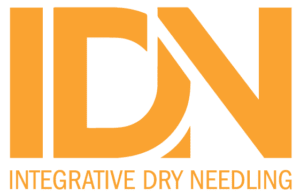Neurophysiological Effects of Latent Trigger Point Dry Needling on Spinal Reflexes
J Neurophysiol. 2024 Dec 20. doi: 10.1152/jn.00366.2024. Online ahead of print. ABSTRACT Deep dry needling (DDN) is a method to treat muscle
Prior dry needling training required.
No previous dry needling training required.
These are not dry needling courses.
Learn the neuroRelease technique ON-DEMAND
Learn MSK ultrasound On-Demand
Learn Neurologic Dry Needling On-Demand for Craniocervical conditions
Exclusive Access for IDN clinicians that have taken a course!
Home / My Account / Dry Needling Research
Biology (Basel). 2022 Feb 4;11(2):243. doi: 10.3390/biology11020243.
ABSTRACT
Our aim was to evaluate the effectiveness of dry needling (DN) combined with conventional physiotherapy in the recovery of patients with subacromial syndrome (SAS). A search was made of the main open access health science databases. The publication date was not limited for systematic reviews but was for randomized clinical trials (RCTs), which were limited to the last five years (from 2016) in English or in Spanish. Ninety-four studies were selected. In order to assess the quality of the studies, the JADAD scale or Oxford quality scoring system was used. A total of 402 patients were analyzed in all the studies in which the application of conventional physiotherapy was compared to the DN, either in a combination or in isolation. Improvements were obtained in pain intensity (Visual Analogic Scale-VAS), Range of Movement (ROM), Pressure Pain Threshold (PPT), functionality with Disabilities of the Arm, Shoulder and Hand (DASH) and the Shoulder Pain and Disability Index (SPADI), and in the cost-benefit ratio. DN is effective and safe in reducing the pain and disability produced by SAS, with the best combination of treatment turning out to be conventional physiotherapy together with DN, obtaining more stable and longer-lasting benefits than merely applying the techniques in isolation.
PMID:35205109 | DOI:10.3390/biology11020243
J Neurophysiol. 2024 Dec 20. doi: 10.1152/jn.00366.2024. Online ahead of print. ABSTRACT Deep dry needling (DDN) is a method to treat muscle
Clin J Pain. 2024 Dec 17. doi: 10.1097/AJP.0000000000001265. Online ahead of print. ABSTRACT OBJECTIVES: This study compares ultrasound-guided pulsed radiofrequency (UG-PRF) with
J Clin Med. 2024 Nov 21;13(23):7032. doi: 10.3390/jcm13237032. ABSTRACT Background/Objectives: The current study aimed to characterize the adverse reactions associated with dry
© Integrative Dry Needling 2023 | All rights reserved | Designed by Weblink
Powered by ![]()
any IDN Course!
*This discount is valid for new registrations only and can not be combined with other discount codes. Offer Expires: 12/31/2023

Not sure which course is right for you? No problem – we created an intuitive process to help!